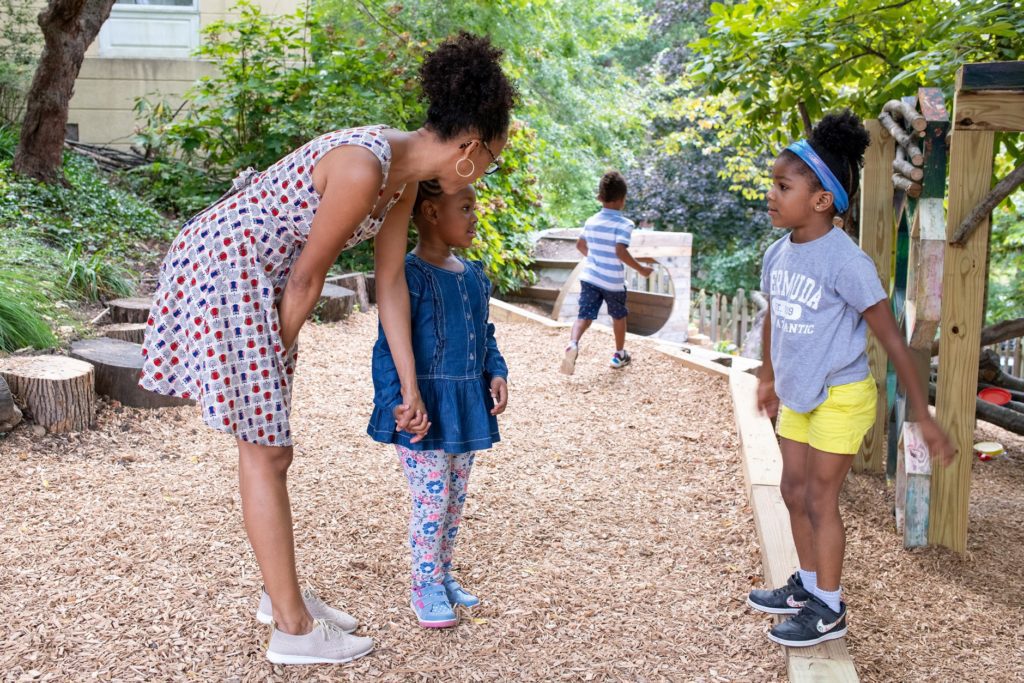Watching my two 4-year-old boys, I see big emotions playing out in grand display daily. I recently carried a floppy child kicking and screaming all the way to the car because I refused to buy him a soft pretzel. Yesterday one son slid right out of his chair and wilted on the floor like a wet noodle, unable to right his body, because his plastic fork was orange!

Though their theatrics seem absurd, I know exactly how my children feel because, in so many ways, I struggle with the same issues. At nearly 40, I still grapple with my own emotions; I get angry when I face a big disappointment or feel derailed by an unexpected change of plans. When I’m overtired, I pick fights with my husband about Tupperware. I know this is a secret of adulthood — manage your own emotions — but let’s be honest, parents, sometimes it’s hard!
We all need an emotion coach.
No, I don’t always feel well equipped to help my children improve their own emotional regulation… and that is where their teachers come in. They are helping my kids grow as people and build healthy emotional lives, and they are helping me to be a better parent. According to The Gottman Institute, “While the world has been focused on academic achievement in childhood, emotional self-regulation has been largely ignored. This is a poor strategy, given that research suggests emotional intelligence is twice as strong a predictor as IQ of later success.” We were excited to find a school that integrated emotional intelligence into the curriculum, but I didn’t realize how much I would learn from it, too.
My first lesson came on a tour of Lowell School (where our children now attend). A Pre-K teacher showed our group of visiting parents a chart of photos; it showed the stations that children can choose from when they arrive in the morning for “choice time.” So far, this seemed like many of the wonderful Pre-K classrooms in D.C. Then, this teacher said something different: “Of course, sometimes the area the children want to play in is full. And we look at that as a teaching moment. We don’t just rush them to another activity, we take a moment to name that feeling of disappointment, recognize how it feels. Then we come up with ways to handle it.” I was immediately struck by her thoughtfulness. This was exactly the kind of skill I want to cultivate in my own children, though I know I often fall short. She reminded me that listening and validating my son’s feelings and helping him identify the emotion are key steps before helping him problem-solve.
Yes, emotional intelligence can be learned … at any age.
Now I notice this approach every day at drop-off. I’ve noticed that what the teachers do often aligns with Gottman’s steps to emotional coaching:
- They are aware of the children’s emotions. The teachers are always observing.
- They see emotions as an opportunity for connection and teaching. This is an opportunity I often miss, but keeping it in mind helps me approach a challenge with patience.
- They listen by actively repeating back what the child says and validating his feelings.
- By labeling feelings, they give the children a vocabulary for their emotions.
- They help problem solve. On this step, I’ve learned a lot from my kids’ teachers. They suggest options in two categories:
- Ways a child can express their emotions like taking some time alone, using words, or drawing, and
- Ways to resolve the issue, like taking a turn or taping a ripped picture back together.
Thinking about both categories of solutions reminds me not to jump to solving the problem. Remembering to address the emotion itself has proved useful with my children AND with the challenges I face as an adult.
Small problems prepare us for big ones.
January brought us a new lesson in emotion coaching. The class pet, a frog named Cheesy, died over winter break. The teachers told the kids about it on their first day back at school. A week later, I asked one teacher if she expected to get a new pet for the class. “No,” she said. “We’re taking this opportunity to let the kids sit with their sadness, find ways to process loss, and to honor Cheesy’s memory.” Yes, we are talking about a frog. What a gentle loss to practice on.
She showed me the space where Cheesy’s cage had been, now full of drawings of the well-remembered frog. How many times had I not taken the time to let my kids process loss? The Lego man accidentally flushed down the toilet, the stick-turned-sword I made them leave on the playground. And how important it is to be able to let go. They will face many losses, some small, but some very big. Being able to recognize that feeling, and having a toolkit to help move beyond that pain may be some of the most important skills my children ever learn.














